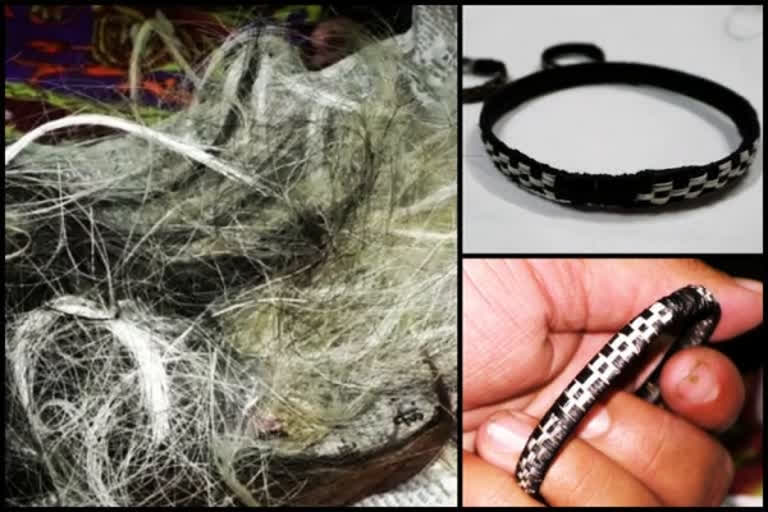Chamba (Himachal Pradesh): The hill state of Himachal Pradesh houses a rich cultural heritage. The state is also famous for many beautiful astonishing ranges of handicrafts and jewellery.
Contributing a great deal to the glorious cultural heritage of Himachal Pradesh, the handicrafts have even earned international fame. Celebrated in India and abroad for their fineness and beauty, the handicrafts of Himachal Pradesh fascinate many.
One among the crafts is an old and forgotten technique of making bangles from horsehair.
Not many people know about the craft today, but Swarna Devi of Chamba has kept it alive without any government aid.
READ: Himachal women earn lakhs by growing organic oyster mushroom
She has been making bangles and ring-bracelets from horsehair for almost 30 years. Swarna Devi learned this work from her mother, who was doing great work in the 70s. Although her mother was given a training institute by the government in 1985, later it was closed and the art went unnoticed.
How Bangles are made:
To make a bangle, the horsehair should have at least 2 feet long. Along with these hairs, bamboo wood is also needed.
READ: Himachal girl who became an inspiration for many
Bamboo wood is cut into small pieces. Then they are given the shape of a bracelet. After this, the hair of different colours of horse is woven on the pieces of bamboo and similarly, the bangle is prepared. However, due to the lack of hair, doing this work is proving difficult. Despite this, Swarna Devi keeps the craft alive and she also teaches the art to the younger generation.
Swarna Devi says that she receives no help from the government because of which the art is not reaching people. She also said that her mother used to get government aid, but in 1985 the government closed her training institute.
READ: Women hug trees to stop deforestation in Himachal
Due to this, the art could not progress further. However, Swarna Devi's mother tried to teach the art to other women including Swarna. Now Swarna Devi is the only woman who continues to cherish this art even today, but somewhere she has the impression that if she had an institution or the government helped her, then other women of Chamba district will also learn it. She also said that today the raw material is also not easily available which makes the work difficult.



